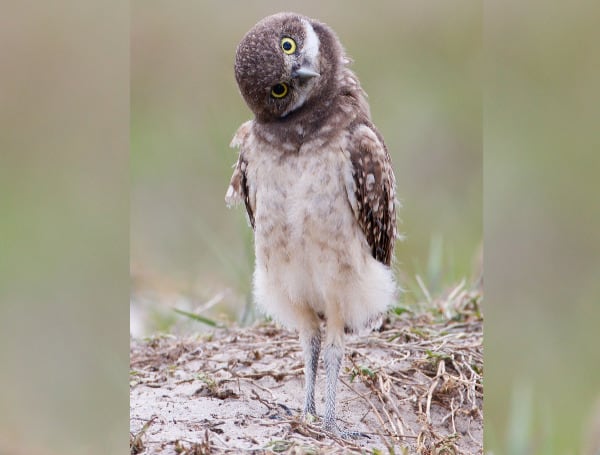The burrowing owl is one of the smallest owls in Florida and are classified as ‘State Threatened’ by the Florida Fish and Wildlife Conservation Commission.
This long-legged owl is found throughout open landscapes in North and South America.
Burrowing owls can be found in grasslands, rangelands, agricultural areas, deserts, or any other open, dry area with low vegetation.
In the news: Florida Spring Brings Bats, Bears, Snakes, And More
Burrowing owls are small, with a body length of 8-12 inches and a wingspan of 16-20 inches. They weigh 3-5 ounces.
They have brown or buffy plumage with white spots and streaks. They have a white throat and chest, and a yellow or orange belly. Burrowing owls have large, yellow eyes.
Burrowing owls are diurnal, meaning they are active during the day. They hunt for insects, small mammals, and reptiles and will often sit on a low perch, such as a fence post, and wait for prey to approach. When prey is detected, the owl will swoop down and capture it.
Burrowing owls nest in burrows that they have dug themselves or that have been abandoned by prairie dogs, ground squirrels, or tortoises.
The typical breeding season for the Florida burrowing owl is February 15 to July 10, though owls can breed earlier or later.
In the news: Living With Snakes In Florida
Burrowing owls typically lay 5-10 eggs. The eggs are incubated by the female for about 28 days. The young owls fledge from the nest about 30 days after hatching.
Burrowing owls are an important part of the ecosystem. They help to control populations of insects and small mammals. Burrowing owls are also a popular bird with birdwatchers.
However, burrowing owls are facing a number of threats, including habitat loss, persecution, and competition from other species. As a result, burrowing owls are declining in many parts of their range.
Habitat threats include development of construction activities and harassment by humans and domesticated animals. Heavy floods can destroy burrows in the ground, which can destroy eggs and young.
Other threats include increased predation by ground and aerial predators in the burrowing owl’s habitat, and vehicle strikes.
There are a number of things that can be done to help protect burrowing owls. These include:
- Conserving and restoring their habitat
- Educating people about the importance of burrowing owls
- Regulating the use of pesticides
- Providing artificial burrows for burrowing owls
The Florida burrowing owl is classified as State Threatened by the Florida Fish and Wildlife Conservation Commission. This means that taking, possessing, or selling burrowing owls, their nests (i.e., burrows), or eggs is prohibited without a permit (68A-27 F.A.C.).
Burrowing owls, eggs, and young are also protected by the federal Migratory Bird Treaty Act.
Android Users, Click To Download The Free Press App And Never Miss A Story. Follow Us On Facebook and Twitter . Signup for our free newsletter .
We can’t do this without your help; visit our GiveSendGo page and donate any dollar amount; every penny helps.


